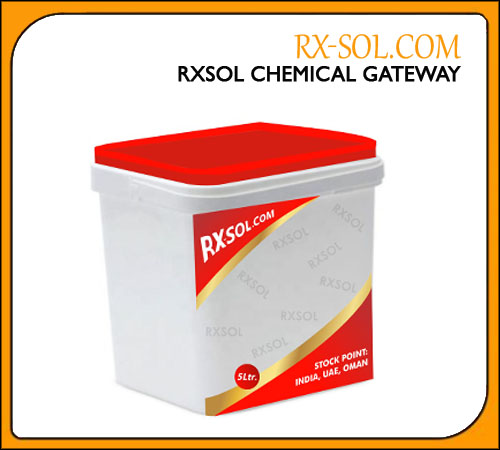Buffer Cleaner
Oman Chemical is leading one Largest Supplier, Manufacture a
Physical and Chemical properties:
Synonyms: 4-(dimethylamino)benzaldehyde; 4 dimethylaminobenzenecarbonal; Erlichs Reagent
CAS No.: 100-10-7
Molecular Weight: 149.19
Chemical Formula: (CH3)2NC6H4CHO
Molecular formula C9H11NO
Appearance White crystalline powder
Purity By GC, using Capillary Column : 99.42%
Melting Point 72 -75 C
Boiling Point 176 – 177 C
Solubility : Freely Soluble in Methanol, Benzene, Ether and diluted Hydrochloric Acid
Indole TEST : ( Indole produced by microorganisms )
The ability to degrade amino acid to identify end products to differentiate bacteria.Indole can be detected to the culture growth ( Pure bacterial culture must be grown in sterile tryptophan or peptone broth for 24-48 hours before performing the test. ) by reaction with 5 drops of Kovac’s reagent to produce a red or red violet colour.
KOVAC’S Reagent - ( para-Dimethylaminobenzaldehyde in isoamyl alcohol and Concentrated hydrochloric acid )
Ehrlich Reagent - ( para-Dimethylaminobenzaldehyde in ethyl alcohol and Concentrated hydrochloric acid )
INDOLE TEST is suitable for
Indole-Positive Bacteria that test positive for cleaving indole from tryptophan include: Aeromonas hydrophilia, Aeromonas punctata, Bacillus alvei, most Citrobacter sp., Edwardsiella sp., Escherichia coli,Flavobacterium sp., Haemophilus oxytoca, Proteus sp. (not P. shigelloides, Pasteurella pneumotropica, Streptococcus faecalis and Vibrio species. Bacteria which give negative results for the indole test include: Actinobacillus spp., Aeromonas salmonicida, Alcaligenes sp., most Bacillus sp., Bordetella sp., Enterobacter sp.,Lactobacillus spp., most Haemophilus sp., most Klebsiella sp., Neisseria sp., Pasteurella haemolytica, Pasteurella ureae, Proteus mirabilis, Pseudomonas sp., Salmonella sp., Serratia sp., Yersinia sp.50, 51 Kitasato's discovery that Escherichia coli could be distinguished from Klebsiella species (Aerobacter aerogenes) by virtue of its ability to produce indole initiated the detection of indole production as an accepted analytical tool for the bacteriologist
MECHANISM :
INDOLE TEST chemical concept :::
Principally this test is based on to determine the ability of microbe to degrade the AMINO ACID TRYPTOPHAN.
Tryptophan ——(Tryptophanase)——> Indole + Pyruvic Acid + Ammonia
p-dimethylaminobenzaldehyde ( with Hcl and isoamyl alcohol ) + Indole —-------------> Quinoidal Red - or - Violet Compound
Result : Development of Cherry Red Colour at the interface of the reagent and the broth, within seconds after adding the Kovacs reagent indicate the presence of indole and the test is positive. If no colour change is observed, then the test is negative and so organisms are not capable of producing tryptophanase.

|
Parameter |
Specification |
Test Result |
|
Purity |
99 – 99.5 % Min |
99.98% |
|
Appearance |
Silvery White Heavy Metal |
Silvery White Heavy Metal |
|
Nitric Acid Insol’e Mat. |
MAX 0.002% |
MAX 0.001% |
|
Bismuth (Bi) |
MAX 0.00001% |
Complies |
|
Cadmium (Cd) |
MAX 0.00001% |
Complies |
|
Copper (Cu) |
MAX 0.00001% |
Complies |
|
Iron (Fe) |
MAX 0.00005% |
Complies |
|
Lead (Pb) |
MAX 0.00001% |
Complies |
|
Nickel (Ni) |
MAX 0.00001% |
Complies |
|
Silver (Ag) |
MAX 0.0001% |
Complies |
|
Thallium (Tl) |
MAX 0.00005% |
Complies |
|
Zinc (Zn) |
MAX 0.00005% |
Complies |


| Appearance (Clarity) | Clear |
| Appearance (Colour) | Colourless |
| Appearance (Form) | Viscous liquid |
| Density (g/ml) @ 20°C | 1.120 - 1.126g/ml |
| Viscosity (20°C) | ~ 120 mPa |
| Average Molecular weight | 380 -420 |
| Acidity (CH3COOH) | max. 0.05% |
| Boiling point | >200 degree C |
| Flash Point | 138.6 degree C |
| pH Value | 5-7 |
| Purity | 99 |
| EC No | 500-038-2 |
| CAS No | 25322-68-3 |
PEG 400 HSN Code : 34042000
Storage : Room Temperature
Shelf Life : 60 Months




Physical and Chemical Properties :
| Molecular Formula | C3H8O |
| Molecular Weight | 60.1 g/Mole |
| Form | Liquid |
| Colour | Clear |
| Specific Gravity (20 °C | 0.786 |
| Boiling Point | 82.5°C (180.5°F) |
| Melting Point | -88.5°C (-127.3°F) |
| Critical Temperature | Not Available |
| Flammability (solid, gas) | Not relevant (fluid) |
| Explosive limits | Not Determine |
| Vapour pressure | 4.4 kPa (@ 20°C) |
| Vapour Density | 2.07 (Air = 1) |
| Viscosity at 20°C | cP 2.4 |
| Closed Cup Flash Point | °F 53 |
| Solubility at 20°C |
% Wt In Water 100 % Wt Water in 100 |


| PRODUCT NAME | : | METHYLALCOHOL |
| CAS number | : | 67-56-1 |
| UN number | : | 1230 |
| Formula | : | CH3OH |
| Odour | : | CHARACTERISTIC |
| Solubility in water | : | COMPLETE |
| Density | : | 0.792 at 20 oC |
| Boiling point | : | 65 oC |
| Melting point | : | -94 oC |
| Viscosity | : | 0.62 cp at 15oC |
| Flashpoint | : | 12 oC |
| Explosive limits | : | 5.5 – 37 Vol% |
| Vapour pressure | : | 127 mbar at 20 oC |
| Skin absorption/irritation | : | YES |
| TLV Country NL Year 1995 | : | 200 S ppm 260 S mg/m3 |
| Pollution category 1994 | : |
D |
